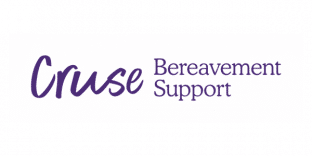Creating courageous conversations: using the Lucy Clip (Case Five) in Advanced Communication skills workshop
Courageous conversations in palliative care include those where clinicians recognise and respond to emotional response to stress and distress, elicit concerns, respond empathically, and acknowledge and discuss uncertainty. These conversations include those which address limits of treatment including escalation of treatment plans (ReSPECT), ‘do not attempt cardiopulmonary resuscitation’ decisions, withholding and withdrawing treatment, and preferred place of care and death. As a facilitator using Real Talk, my main aim is increasing clinicians’ confidence in having these conversations.
I always see my opportunities as a facilitator of Real Talk as a gift of time in the busy clinician’s world.
End of Life Talk
There are now over 20 years of national reports and guidance that indicate we are still struggling in healthcare and society to have open and honest conversations about dying. Most recently, barriers have been explored within the Royal College of Physicians (RCP, 2018) Report “Talking about dying: How to begin honest conversations about what lies ahead”.
Observing those who are more experienced than us having difficult conversations can make us feel that we wouldn’t be able to hold that conversation so well. On the other hand, observing experienced clinicians having these conversations using Real Talk clips can help build confidence by helping learners unpick the skills.
Model the Model
As a facilitator, I find it helpful to “model the model”, I narrate what I am doing and label the skills, I explain it’s not always something that comes naturally in health care. We might learn something by osmosis, but by exploring and articulating skills, we can learn more, and more methodically. I encourage trainees to try out skills, and I encourage them to verbally commentate on what they see and what they are doing – something that would feel misplaced and clumsy in conversation with a patient, but which can be enabled in a safe learning environment. This verbal commentary technique is used by other professionals learning new skills. For instance, members of the police taking an advanced driving course talk out loud whilst driving, commenting on the potential risks that they see, the landmarks they drive past, and the driving practices they are engaging in. I encourage my learners in communication skills training to use the gift of the safe learning space to narrate out loud what we are considering in our minds, to talk out loud about the dilemmas we face in deciding which way to take the conversation. We all can learn effective facilitative communication skills, as Ruth explains in her Blog “Demystifying the secrets of good communication in healthcare”.
Using “Lucy” Real Talk clip: Label the skills – say what you see, say what you hear
Using the “Lucy” Real Talk clip is very impactful, I use it on day one of advanced communication skills. I always play it twice, sometimes more in one session. The gift of these real consultations is so powerful. We explore “what do you see?”, “what do you hear?”. We use the gift of the clips to use how we chose to facilitate, to best meet the needs of the learners. We use the gift of time in the learning environment, a safe place to narrate and discuss out loud. I use a crib sheet when using the Real Talk clips and stop and pause the clips at particular moments – asking learners to say out loud what they see and hear, then consider what might happen next, sometimes setting up role play in pairs in the group to explore how we would carry on with the conversation. Encourage the curiosity and ask learners after watching Lucy, How do you think Lucy feels now? How do you think the clinician feels now? How are you individually feeling about facing “How long have I got?” type conversations?
Name the skills within “How long have I got?”
The Lucy clip is only 2 minutes 38 seconds long yet contains so many learning points. Use the Real Talk facilitator manual for guidance and prompts for learning points. The learning and discussion points centre around the patient raising: a difficult topic for conversation, life expectancy, imminent dying, acknowledging and responding to uncertainty, and implying a desire to die. Sharing a copy of the transcript can be very helpful to focus on the way opportunity spaces are provided by the clinician and the reframing of screening questions , such as “anything else I can do for you today?” to “anything you’d like to ask me?”. Lucy is clearly distressed and we can see the clinician responding to this on many different levels: her posture and positioning at the bedside, softly spoken voice, asking about “feelings”, pushing the drug card to one side, making explicit empathetic statements and using continuers (mm, right, ok) to show Lucy she is willing to hear more.
I focus on increasing facilitative communication skills and enhancing confidence within this, whilst also acknowledging and exploring blocking behaviours. Enabling the learners to shift from a purely physical patient assessment to more of a psychological assessment and person-centred approach. I have seen increases in post training expressions of empathy by the learners and increases in confidence in using empathy. We always encourage learners to try one new thing straight away from the skills learnt and then reflect and revisit because recounting learning helps reinforce it.
Now practice – get to know the clips and tweak your facilitation as your experience of using the clips grows.




